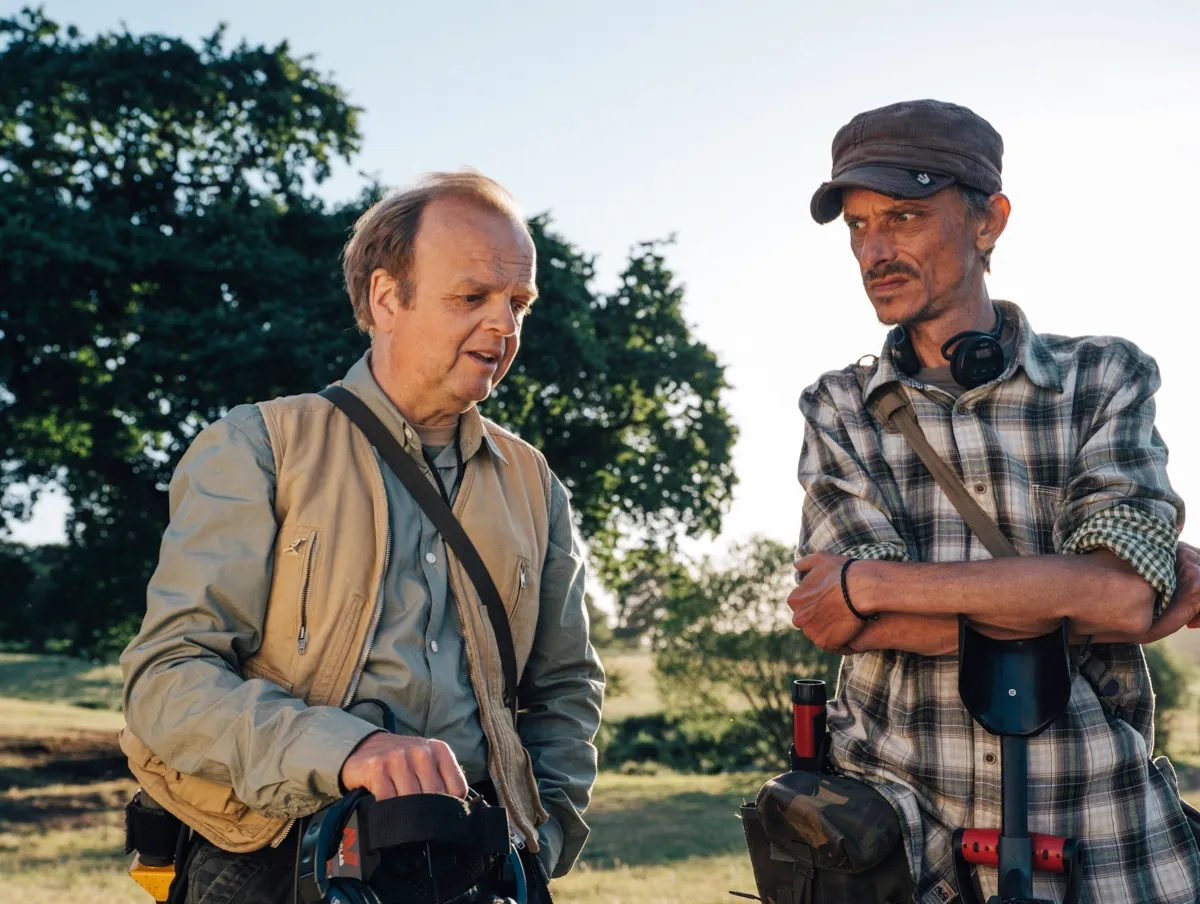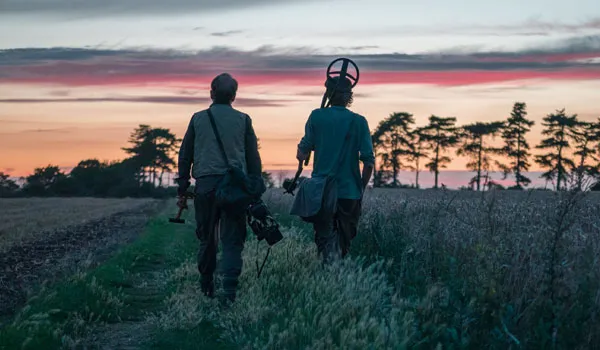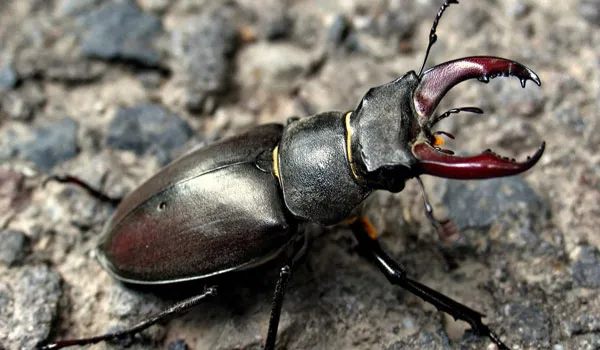I grew up in a Kentish village, more suburban than rural but just a stone’s throw from the countryside and it was here that I spent every spare minute. My dad took me on long bike rides, taught me the names of the birds and wildflowers and inspired in me a lifelong passion for the natural world.
I’ve been able to indulge that passion by writing and directing a comedy series for BBC4, filmed in the Suffolk countryside.

Detectorists is about a couple of friends, Lance and Andy, who happen to share an obsession for metal detecting. I don’t know if I realised it at the start, but as the project developed it became clear that the landscape and wildlife were as much characters in the story as the human cast.
Golden days of summer
The hobby of metal detecting usually happens in the autumn and winter months when there are no crops in the fields. Enthusiasts spend cold weekends trudging up and down muddy fields, headphones on, staring at the ground and swinging their detectors in front of them, hoping to find something old and interesting. It’s a strangely lonely, meditative pastime and when I started to write the first series, I imagined it set in this cold, wintry landscape with grey skies, mud and biting winds.
Ahead of commissioning a full series, the BBC asked us to film a 10-minute taster of the show, which we shot in 2013 on the day Andy Murray won Wimbledon, just about the hottest day of that year. The result was a completely different look to that which I’d originally imagined, lush and green, and I realised that I’d be a fool not to shoot in the summer and take full advantage of the beautiful English countryside.
It made for much more comfortable working days and it meant that I was able to feature wildlife in a way that would have been more difficult in the cold months.

Wildlife stars
As well as the scripted scenes, we made time to capture some ‘general views’: short snippets of something interesting to sprinkle throughout the episodes.
Early on in the shoot, I asked the crew to keep an eye out for wildlife that we could try and film in its natural environment. Several times a day, someone would approach me with clasped hands or with something buzzing furiously from inside a paper cup, before presenting me with a caterpillar or a butterfly or a particularly impressive grasshopper.
I had a wish list of quintessentially British species that I had everyone on the lookout for, among them an adder and a stag beetle. Plenty of people saw several adders while we were out in the fields but spotting a snake and filming it are very different things and we never managed to get any footage. (At one point a boom operator had an adder slither across his feet midway through a take but couldn’t say anything for fear of ruining the shot.)
The stag beetle proved even more elusive, with not a single sighting during that first year.
In summer 2015 we shot the second series and started with some interior scenes in Romford. It was at the end of the first day, sitting outside a restaurant on a busy high street, that a stag beetle landed, quite literally, at my feet. At first I thought somebody had thrown a shoe at me but when the shoe reared up and waved a pair of shiny antlers, I realised this was an audition. I hadn’t seen one of these incredible insects for years, probably not since I was a kid. He got the part.

I improvised some overnight accommodation for him out of a wash bag and first thing next morning, we set up one of our ‘tainted beauty’ shots, where we pair something beautiful and natural with something ugly and manmade. So watch out for a brief glimpse, in episode three, of a stag beetle scurrying past a crushed Pepsi can.
I wrote a scene where my character, while strimming on a grass verge, spots a toad and carries it to safety. Production found an animal handler who said he could supply a toad but it wouldn’t be a common toad, as he wasn’t allowed to keep native British species. Instead he brought a young cane toad from South America which looked very similar but, to me, was obviously not Bufo bufo.
It was small details such as this that I concluded it was essential to get right, because if I saw a shot of a tropical toad in the English countryside it would jar me out of the story.
The toad didn’t make it to the screen. We ended up filming a frog that one of the crew had found on a different day. (Note: The cane toad had to have its own, dedicated vehicle to take it to and from set.)
On another occasion, I needed to get a shot of a wasp crawling around the edge of a cup of coffee. Again, easier written than filmed. For obvious reasons, the crew were less keen to spend their time trying to catch and tame a wasp, so eventually a cash reward was offered. That proved to be enough incentive and I soon had a selection of keen young insects hoping for their break into acting. The successful applicant performed the cup-walk beautifully and flew away to freedom, and Megan the production runner earned fifty quid. No wasps were hurt during the making of Detectorists and, thankfully, no humans either. I’ve heard the wasp is doing an episode of Casualty.
Other beauty shots that I’m particularly proud of are a stunning pink marsh orchid with an electric blue weevil, and a huge poplar hawkmoth who danced brilliantly in the headlights of Lance’s classic car.
We don’t think of the wildlife in this country as being particularly spectacular or exciting but really, the diversity of habitats and species we have is staggering. I’m constantly astounded by British wildlife.
In the end, Detectorists is just a sitcom, but it is also my love song to the English countryside – and perhaps will remind viewers that they love it, too.
Mackenzie Crook starred in the sitcom The Office, the film series Pirates of the Caribbean and the fantasy drama Game of Thrones. His sitcom Detectorists, which he writes, directs and stars in, first aired in 2014 and won a BAFTA for best scripted comedy. It co-stars Toby Jones, Aimee-Ffion Edwards and Rachel Stirling.
The third series of Detectorists continues on Wednesdays at 10pm on 29 October on BBC4.